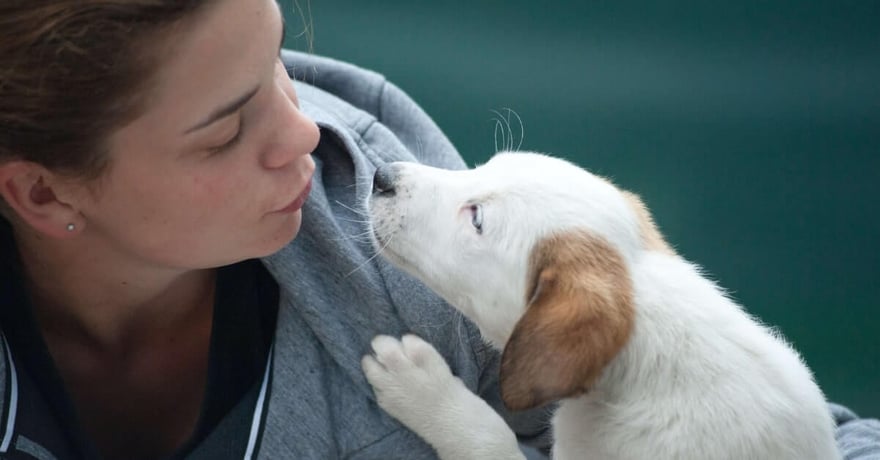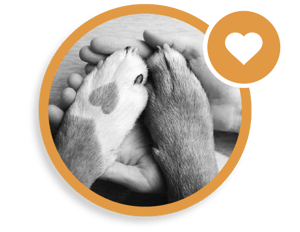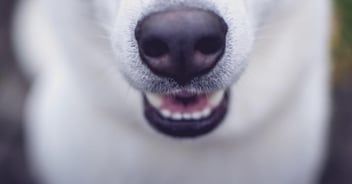What to Expect in the First Year of Owning a Puppy

You finally did it — you got the puppy. Congratulations on being a pet parent! Whether you got it for your family to enjoy and get to know, or you simply wanted a little companionship for yourself, bringing home a puppy is an exciting and heartwarming experience. However, it’s not all cuddles and wagging tails, especially in your puppy's first year.
We’ve put together this guide to let you know what to expect from a puppy in your first 12 months together, without delving too deeply into the specifics of what a vet might tell you in your first few visits. With this article, you’ll learn the puppy milestones from birth until they’re a year old, so you can be prepared for all of them.
The First 4 Months:
Your first month with a puppy: Before you take Them home
A newborn puppy will have a strong attachment to its mother and siblings, with these family members being their initial influences. When your puppy is a true newborn, they will be essentially blind and deaf, with their eyes opening only after 2-4 weeks of age. While they will have a sense of taste and smell, their sight, hearing, and baby teeth will develop in the first month. After this period, the dog will have to stay with their biological family for another 2-4 weeks before you can take them home (granted that they’re not an orphan), though waiting until they are at least 8 weeks of age is preferred
Getting to grips with their new home
During this time, they’ll have developed some cognitive skills, social capabilities, and their first bite, but they might still be a little bit afraid of the big bad world, so give them plenty of positive reinforcement to ease them into it. Within the first 6-8 weeks of their life, you’ll need to take the puppy to the vet for their first examination and vaccinations.
Basic house training
It’s during this time that you can get them acclimated to your home and their toys, and start introducing basic training tasks to your puppy, such as potty training, potty breaks and crate training. This can take a little longer than 4 months to perfect, with indoor number ones and twos being fairly common throughout the period, but you should still make some good headway with house training.
As your puppy explores the world, you can also focus on some basic commands, such as the puppy’s name and even “sit”, along with getting them comfortable with walking on a leash. You should also start to teach them some basic rules with their toys so they don’t get too attached to them, rewarding them with treats for being calm when you take them away from them or they’re without them.
Basic socialization
Along with getting the puppy used to your home, this is also a time to get them used to socializing. They’ll already have a strong bond with you, but they should get to know your family, regular visitors, and even some other dogs, as they’ll still be fairly green when it comes to interactions.
4 to 6 Months of Age:
After your puppy has become a little more assimilated into your life, gaining some more social skills and understanding of the house, around 4 months in, their development will start to increase exponentially. In everything from their physical size to their behavior, you can expect some fairly major changes over the next few months.
Teething
4-month-old puppies are on the precipice of becoming closer to who they’ll be in the long term, with a major shift being the experience of teething. During this period, dogs will start to chew on anything and everything they can get their jaws around, so you should invest in some good teething tools and chew toys.
Fear stage(s)
Between 4-5 months old, for a period of around 2-3 weeks, most dogs will go through a fairly nervous phase. During this time, they can be a little more jumpy than usual, but this is a natural, wired-in reaction to domestic items rather than the wildness that they’re used to in an evolutionary sense. You just have to be patient and give them positive reinforcement throughout this time — it’ll be over soon enough.
It’s worth noting that the dog will likely go through this phase again when they reach around one year of age, so don’t think of it as a one-and-done situation as your puppy grows.
6 to 9 Months of Age:
After their first 6 months, your puppy will start to change a lot faster than before, getting closer and closer to relative adulthood (they grow up so fast).
The birds and the bees
Dogs go through puberty very young, so it’s around this age that you need to start considering whether you’re going to spay or neuter them. This is more time-sensitive in the case of a smaller dog, as a larger dog will likely need to wait for a little before being spayed or neutered so as to not disturb their growth — around 12 months should do the trick.
9 to 12 Months of Age:
Final training steps
In this period of your dog's life, you can start to train your puppy for some more complicated situations. This includes travel in crates, more advanced commands, and higher degrees of socialization with other dogs. It also includes letting them run freely in the dog park without a leash and having more playdates with the pets of friends. Once you’ve got this all under control, the hard part is over, and you get to enjoy your new best friend with fewer limits!
At PHI Direct we are firm believers in protecting cats and dogs with pet insurance - even if a pet owner ends up choosing one of our competitors! Take the time to find the right pet insurance policy to help with unexpected veterinary bills and as a safety for your pet's accidents or illnesses.
Posted on June 20, 2022 | Categories: Puppy Dog Cost Training
Share


